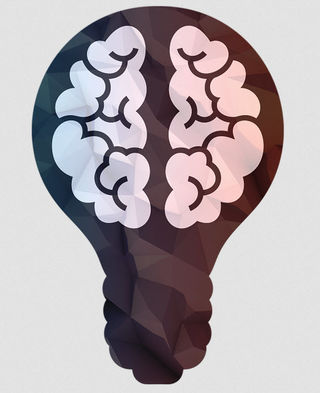Neuroscience
Scientists Use Optogenetics to Make Mice Hallucinate
Scientists stimulated neurons with light that induced visions in mice.
Updated December 20, 2023 Reviewed by Abigail Fagan

Have you ever wondered how the brain is able to see things that are not really there? A hallucination is a perception formed without external stimuli. Last week, neuroscientists at the Stanford University School of Medicine published a landmark study in the journal Science demonstrating how optogenetics can activate nerve cells in the visual cortex to trigger hallucinations in mice.
Optogenetics is a method of controlling cells in living tissues using light and genetics. Scientists add genetic code to tissue, which enables the production of light-responsive proteins called opsins. For neuroscience studies, opsins are inserted in neurons. These neurons may be turned on when exposed to light, and switched off when the light is removed.
Karl Deisseroth, a Stanford professor and a pioneer of optogenetics, led the research team. Seven years prior, Deisseroth and his colleagues demonstrated the ability to activate individual neurons in live and alert mice. This recent study represents a leap forward in optogenetics. Not only can scientists control multiple individual specified neurons simultaneously, but they can also induce perception in mice as evidenced by their behavior.
The researchers first prepared the mice’s neurons in the visual cortex using optogenetics. The neurons were inserted with two genes—one gene was encoded with a fluorescent protein that glowed when a neuron was active, and the other gene contained an opsin that caused neurons to fire when exposed to infrared laser light. Windows into the mice’s visual cortex were created using a clear glass covering that allows the projection of holograms in the region.
The mice were shown images of horizontal and vertical bars. By monitoring the mice’s brain activity, the neuroscientists discovered which neurons light up when either horizontal or vertical bars were shown. In this manner, the scientists were able to create hologram recordings that could be played back with photons landing at targeted areas along individual neurons.
Then the researchers trained laboratory mice to exhibit certain behaviors when shown images of vertical and horizontal bars. The mice were trained to lick water from a tube only when they saw vertical bars.
The scientists observed that the mice would lick the tube of water when a hologram of vertical bars was projected onto the visual cortex, but not when a hologram of horizontal bars was projected. In other words, the mice exhibited the same behavior with light directly activating the neurons of their visual cortex as if they were actually seeing images with their eyes. The scientists were able to form a perception using optogenetics without showing the mice an actual image. The team discovered that only around 20 neurons or less were needed to optogenetically control the mice’s licking behavior.
“It’s quite remarkable how few neurons you need to specifically stimulate in an animal to generate perception,” Deisseroth said in a Stanford News report on July 18, 2019. “A mouse brain has millions of neurons; a human brain has many billions. If just 20 or so can create a perception, then why are we not hallucinating all the time, due to spurious random activity? Our study shows that the mammalian cortex is somehow poised to be responsive to an amazingly low number of cells without causing spurious perceptions in response to noise.”
This neuroscience breakthrough may provide insight into how mental illnesses such as schizophrenia, Alzheimer’s disease, Lewy body dementia, bipolar disorder, schizoaffective disorder, delirium, and other conditions that may cause hallucinations such as migraine, brain tumors, Charles Bonnet Syndrome, seizures, terminal illnesses, epilepsy, Creutzfeldt-Jakob disease, metabolism disorders, and sleep disorders. This study lays the foundation for the possibility of the creation of single-cell resolution neural prosthetic devices in the future.
Copyright © 2019 Cami Rosso All rights reserved.
References
Goldman, Bruce. “Stanford team stimulates neurons to induce particular perceptions in mice's minds.” Stanford Medicine News. July 18, 2019.


